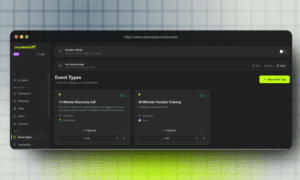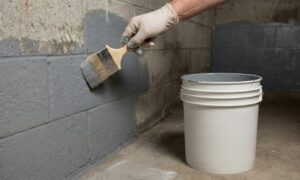Are you in search of a reliable and efficient way to manufacture your printed circuit board? Look no further than pcb assembly services! From design to prototyping and production, these services can take care of all your PCB needs. But what exactly is PCB assembly? How does it work? And how do you choose the right service for your project? In this post, we’ll answer all these questions and more, so buckle up and get ready to learn everything you need to know about PCB assembly services!
What is PCB Assembly?
PCB assembly is the process of connecting electronic components to a printed circuit board (PCB). This can be done by hand or using automated machines. The first step in any PCB assembly process is to place the correct components on the PCB. This can be done manually or using an automated machine. Once all of the components are in place, they must be soldered to the PCB. This can be done by hand or using an automated machine.
After all of the components are soldered to the PCB, the next step is to test the PCB assembly. This can be done manually or using an automated machine. Once the testing is complete, the PCB assembly is ready for use.
Types of PCB Assembly Services
There are two main types of printed circuit board (PCB) assembly services: turnkey and partial. Turnkey services are the most comprehensive and provide customers with a complete product, ready to use. This includes all design, fabrication, assembly, and testing services. Partial assembly services include some, but not all, of these steps. Customers may already have a PCB design or may need assistance with designing their own boards. In either case, the service provider can fabricate the boards and assemble the components onto them. Once the PCBs are assembled, they will need to be tested to ensure they are functioning properly.
Turnkey services are often used by businesses that do not have the in-house resources to design and assemble PCBs on their own. This type of service is also beneficial for businesses that want to outsource as much of the manufacturing process as possible. Partial assembly services are typically used by businesses that have some in-house capabilities but still need assistance with certain aspects of the manufacturing process. This could include help with designing the PCBs or assembling the components onto them.
Testing is an important step in any PCB assembly process, regardless of whether it is turnkey or partial. Service providers will use various testing methods to ensure that the assembled PCBs are functioning correctly. These tests can include visual inspections, electrical measurements, functional testing, and more.
Benefits of Using Professional PCB Assembly Services
When you’re ready to have your printed circuit board (PCB) assembled, you have a few different options. You can do it yourself, farm it out to a contract manufacturer (CM), or use a professional PCB assembly service. There are benefits and drawbacks to each approach. Here, we’ll take a look at the benefits of using professional pcb assembly services.
The biggest benefit of using a professional PCB assembly service is that they have the experience and expertise to get the job done right. They know the ins and outs of PCB assembly and can troubleshoot any issues that may arise. This can save you time and money in the long run.
Another benefit of using professional PCB assembly services is that they can scale up or down as needed to meet your production needs. They also usually have access to better equipment and facilities than most small businesses or individuals. This can result in higher quality assemblies and shorter turnaround times.
Finally, professional PCB assembly services typically offer some form of warranty or guarantee on their workmanship. This gives you peace of mind knowing that if something goes wrong, you’re covered.
If you’re considering having your PCB assemblies done professionally, weigh the benefits against the cost to see if it’s the right decision for your project.
How to Choose the Right Service Provider
When outsourcing your PCB assembly, it’s important to choose the right service provider to ensure a high quality product. Here are a few factors to consider when selecting a provider:
-Capabilities: Make sure the provider has the capabilities to meet your specific requirements.
-Quality: Check for ISO 9001 certification and ask for references from previous clients.
-Price: Get quotes from several providers and compare prices.
– Delivery Time: Make sure the provider can deliver your order in a timely manner.
-Location: If you need face-to-face support, make sure the provider is located near you.
How to Prepare for a PCB Assembly Project
Are you considering starting a PCB assembly project? If so, congratulations! This is a great way to get your product onto the market quickly and efficiently. But before you begin your project, there are a few things you should do to prepare. Here’s what you need to know:
- Choose the right contract manufacturer: Not all contract manufacturers are created equal. When it comes to PCB assembly, you want to partner with a company that has experience and a proven track record of success. Make sure to do your research and ask around for recommendations before making your final decision.
- Create detailed assembly drawings: Your contract manufacturer will need clear and concise assembly drawings in order to produce your PCBs correctly. Be as specific as possible when creating these drawings, including dimensions, component placement, and any special instructions.
- Gather all materials and components: Before sending your project off to the contract manufacturer, make sure you have everything you need. This includes all materials (PCBs, solder, etc.) and components (Resistors capacitors , integrated circuits , etc.). Once everything is gathered, double check that everything is compatible and will work together as intended.
- Run prototyping and testing: Once your PCBs are assembled, it’s important to test them out before mass production begins . This helps ensure that there are no issues with the design or components . Make sure to run thorough prototyping and testing procedures at this stage to avoid any problems down the
The Process of PCB Assembly
The process of printed circuit board (PCB) assembly is a complex and precise undertaking that requires a great deal of experience and expertise. There are a variety of different methods that can be used to assemble a PCB, and the choice of method will depend on the specific requirements of the project. In general, however, the assembly process can be divided into four main steps:
- Mounting the components
- Applying the solder paste
- Refining the solder joints
- Testing the assembled PCB
Tips for Working with Professional Services Providers
If you’re considering working with a professional PCB assembly service, there are a few things you should keep in mind. Here are some tips to help you get the most out of your experience:
- Make sure you have a clear idea of what you need. Before meeting with any potential providers, take some time to sit down and map out exactly what you need from them. This will ensure that you’re able to communicate your vision clearly and that you don’t waste anyone’s time during the initial consultation.
- Do your research. Not all PCB assembly services are created equal. Take some time to read online reviews and compare pricing between different providers before making a final decision.
- Get everything in writing. Once you’ve decided on a provider, be sure to get all the details of your agreement in writing. This will protect both parties involved and help avoid any misunderstandings down the road.
- Be prepared to be flexible. While it’s important to have a clear idea of what you want, remember that PCB assembly is a complex process with many variables. Be prepared to make adjustments to your plans as needed in order to ensure a successful outcome.
Alternatives to Professional Services
If you’re looking for alternatives to professional PCB assembly services, there are a few options available to you. One is to assemble the PCB yourself. This option is usually only viable if you have a small number of boards to assemble and you’re confident in your ability to do so.
Another option is to use an automated assembly machine. These machines are designed for high-volume production and can be programmed to assemble your PCBs with precision. However, they can be expensive to purchase and operate, so this option may not be viable for everyone.
Finally, you can outsource your PCB assembly to a contract manufacturer (CM).

































